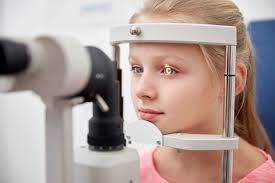Visiting an optometrist is fundamental for maintaining eye health, particularly if managing conditions like diabetes. Patients with diabetes are at an elevated risk of developing eye problems, such as diabetic retinopathy or glaucoma, making routine visits to an optometrist a key step in diabetic eye care.
Preparing thoroughly for your initial visit makes sure your optometrist can provide tailored recommendations and care for your specific needs. Here are the key recommendations to help you prepare for your first appointment with an optometrist:
Know Your Family Eye Health History
Documenting your family’s eye health history is key for your optometrist. Many eye conditions, including glaucoma and macular degeneration, have genetic components.
If you have a family history of diabetes-related eye conditions, this information can help the optometrist assess your level of risk and recommend diabetic eye care measures.
Be ready to discuss whether any relatives have experienced vision issues, undergone surgical procedures, or have been diagnosed with specific eye diseases.
Prepare a List of Medications
Before your visit, create a comprehensive list of all medications you are currently taking, including prescriptions, over-the-counter drugs, and supplements. Diabetic patients, in particular, often manage multiple medications, many of which could impact their eye health.
Include any known allergies, especially to medications or eye drops. This can impact the choices your optometrist makes for diagnostic procedures or treatments.
If you’re wearing prescription eyewear or contact lenses, take them along. This provides the optometrist with more information about your eye prescription and any challenges you may have experienced with your current eyewear.
Document Your Vision Problems
It is helpful to list any symptoms or issues you are experiencing with your vision. These could include blurry vision, sensitivity to light, difficulty focusing, or frequent headaches. For diabetic patients, it is key to pay special attention to any changes, such as difficulty reading small text or noticing floaters in your vision.
Also, contemplate any practical challenges, like adjusting to digital screens or nighttime driving. Sharing these details helps the optometrist identify potential conditions early and tailor the consultation to address your unique concerns.
Know Common Eye Exam Procedures
Familiarizing yourself with standard eye exam procedures can help you feel more comfortable and informed during your visit. Expect initial assessments like vision tests, which measure your ability to see letters and figures at different distances.
There is an eye pressure test as well to screen for glaucoma, and imaging tests might also be part of the process. These can include retina scans or optic nerve scans to detect early signs of diabetic retinopathy.
Preparing for Dilation or Light Sensitivity
Certain eye assessments require pupil dilation, which allows the optometrist to examine the retina more thoroughly. Be prepared for this possibility as dilation can cause temporary light sensitivity and blurry vision for several hours.
To mitigate discomfort, bring sunglasses or a brimmed hat to your visit. If you are unsure how the dilation will impact your ability to drive afterward, plan in advance to arrange transportation if needed.
Understand Your Vision Insurance Coverage
Reviewing your vision insurance coverage before your appointment is fundamental to avoiding any surprises. Check whether your plan includes comprehensive routine eye exams or specific diagnostic procedures. For diabetic eye care, inquire whether more imaging tests or specialized examinations are covered.
Also, confirm whether your optometrist is within your insurance network and if there are any out-of-pocket expenses you should anticipate. Gathering this information beforehand enables a smooth financial experience during your visit.
Learn More About Diabetic Eye Care
Preparing for your first optometrist visit is key for a comprehensive evaluation, especially for diabetic eye care. Bringing your family history, documenting symptoms, and familiarizing yourself with exam procedures can make the visit productive and informative.
To learn more about diabetic eye care, schedule a consultation with an optometrist or trusted eye health specialist near you.
Related Articles
The Connection Between Bunions and Joint Pain in Your Feet
What You Need To Know About Varithena for Treating Varicose Veins
When To Seek Professional Help for Persistent Back Pain
Differences Between a Pediatric Root Canal and an Adult Root Canal





